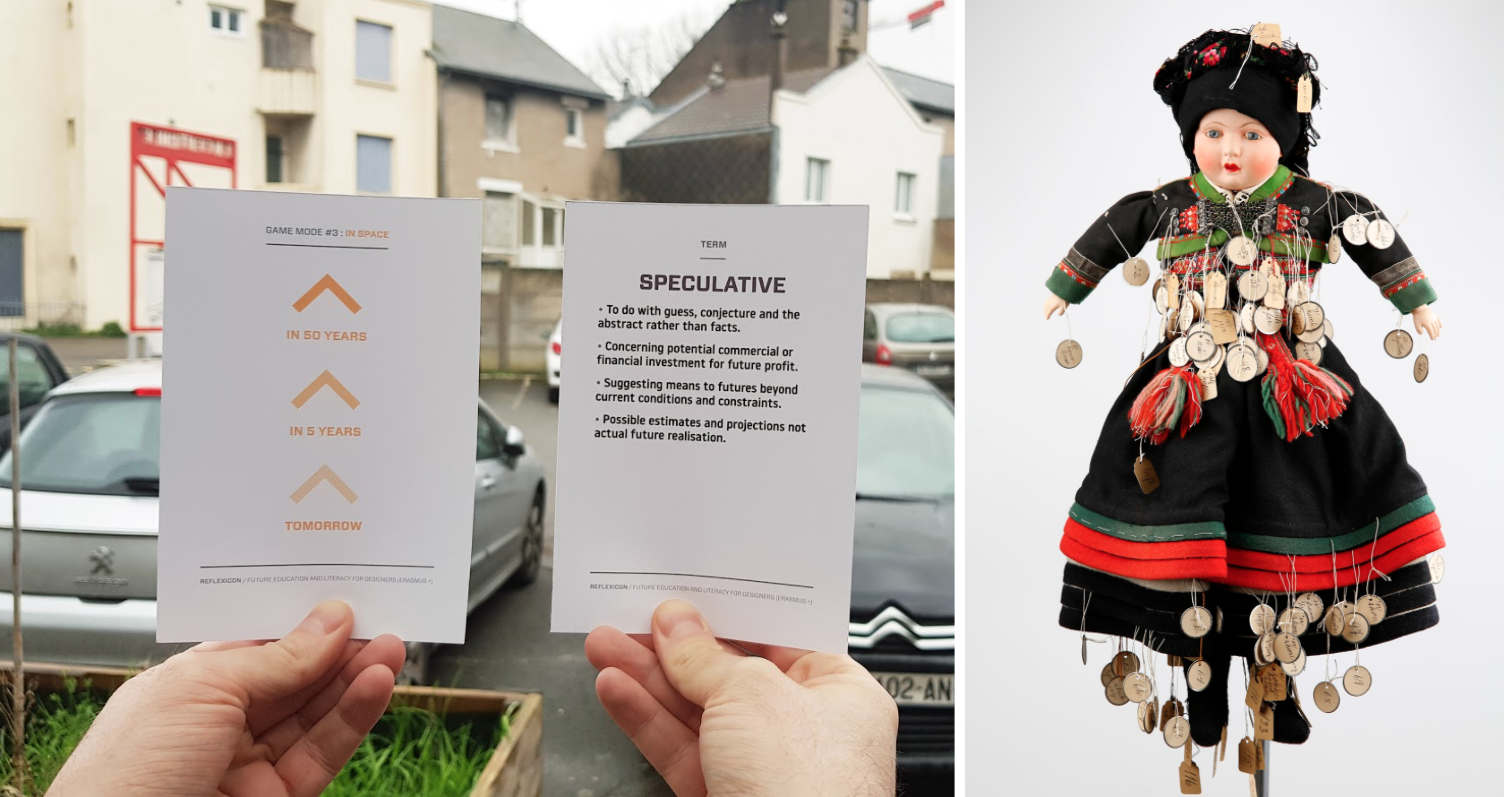
Figure 1 (left) REFLEXICON. Two cards showing timescales and a specific term “Speculative”. Photo by Bastien Kerspern. Figure 2 (right) Lexical tagging of traditional costumes from Setesdal (front view). National Cultural Historical Museum in Oslo.
The LEXICON is featured in a peer reviewed article in the special issue of the multilingual international design journal Temes de Disseny #36 on Design Futures Now, jointly edited with our ELISAVA partner.
Morrison, Andrew; Bjørnstad, Nina; Martinussen, Einar Sneve; Johansen, Bjørn; Kerspern, Bastien & Dudani, Palak. (2020). ‘Lexicons, literacies and design futures’. Temes de Disseny, No. 36, pp. 114-149.
ABSTRACT
As the world in which we live becomes more complex and contested, economically and politically but also in terms of rapid and long-lasting environmental change, design education faces new demands and challenges. We frame and situate these in terms of what we call “design futures literacies.” At stake in such a framing is a rethinking of design’s priorities in the context of climate change and resource use and reuse in futures that are uncertain, contingent and emergent. The article positions design as having shifted away from a techno-modernist design solutionism and to how it may engage in shaping futures through experimentation and exploration in the critical and productive engagement with techno-cultural life. These arguments are located within the prior experience of the transdisciplinary team of co-authors as well as a European level project between four leading design universities. The article takes up their first work package on the co-creation of a Lexicon for Design Futures Literacies and early experimentation towards generating resources and experience for its wider use. The article addresses the largely under articulated relations between language and design (from lexis to discourse). First, we present the development of an alphabetic, lexical semantic set and core grouping of design and futures terms. This vocabulary, drawn from a range of sources and experiences, is linked to the design of a related lexically centred card game. Second, the focus on vocabulary was extended to a section on situating lexis in cultural historical contexts, 3-dimensional haptic form giving and the language of abstraction. This was achieved via reference to a design narrative fiction experiment on emerging technologies and a historical costume annotation project as a prompt for making connections between items from the lexicon and modelling abstract forms in clay. Third, in collaboration with a government ministry and a design council, students developed four future digital urban living scenarios with trust as their central focus. “Languaging” the future was embodied in physical scenarios open to the public, connected to a professional seminar and to international research events where verbal descriptions, explanations and reflections were voiced by the students alongside their educator-researcher. The article closes with suggestions that there is further opportunity for attention to lexis and multimodal discourse modes in shaping design futures literacies, within and across the project but also in practice, in policy and for and as design pedagogy.
For PDF article:
https://raco.cat/index.php/Temes/article/view/373847/468058